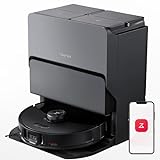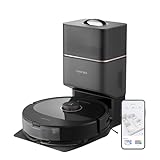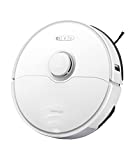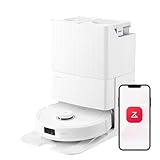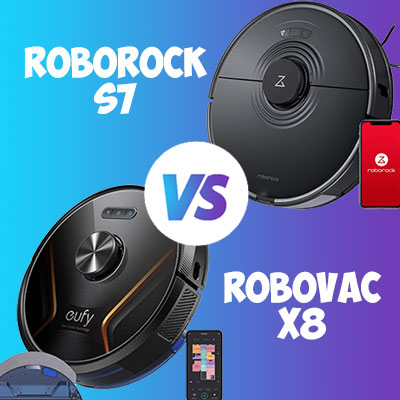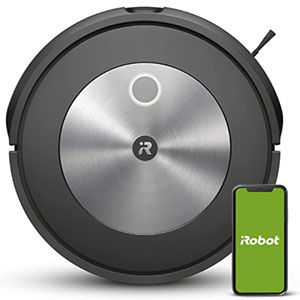Roborock Q7 vs S7 – Not What You Think
Roborock Q7
Roborock S7
Roborock Q7

- Dimensions 13.90 × 13.78 × 3.80 inches
- Weight 7.5lbs
- Suction Power 4 Suction Levels
- Navigation PreciSense Precision LiDAR Navigation
- Brush All-rubber brush
- Dirt Detect No
- Camera No

Roborock S7

- Dimensions 13.9 × 13.8 × 3.8 inches
- Weight 10.44lbs
- Suction Power 4 Suction Levels
- Navigation PreciSense Precision LiDAR Navigation
- Brush All-rubber brush
- Dirt Detect No
- Camera No
Which one to choose Roborock Q7+ or Roborock S7?
Roborock Cyber Monday 2025
3 Reasons to Choose the Roborock S7
- Upgraded floating brush: New finned all-rubber brush for more durable work without hair tangles.
- Unique Sonic Mopping technology: S7 robot vacuum scrubs with 3000 times per minute feeding by 300 ml water tank.
- Intelligent Carpet recognition: S7 accurately recognizes carpets, automatically lifting the mopping pad and starting powerful carpet cleaning.
Introduction
What’s the best Roborock vacuum to buy? If you are torn between the two, this is the place to be. We have compared them to help you make the perfect purchase decision.
Roborock, despite being from the Chinese frontier, is an outstanding brand that rivals the big boys, including Roomba, Dyson, and Shark. Among the company’s most popular models are Roborock Q7 and Roborock S7. The Q7 is the latest model in the brand’s lineup, having been released in April 2022, while the S7 is an older model released back in March 2021. So the big question is, can the new Q7 match the S7? That’s what we are about to find out.
The Q7 and S7 are pretty similar, but there are profound differences that should inform your purchase decision. The Q7 has better mapping and is cheaper but has a basic mopping system. On the other hand, the S7 offers better mopping features but is much more expensive.
For more regarding how the two compare, read along.
Face-to-Face Comparison Review

The Roborock Q7 boasts a low-profile design to allow it to go under low-profile furniture where dirt hides. It can also pass between tight spaces such as chair legs. Like other Roborocks, it is round-shaped.
The dimensions are 13.90×13.78×3.80-inches. On our weighing scale, the robot alone weighed 7.05lbs. On the top interface, it has a raised turret that houses the navigation and mapping system, and two buttons – the Power button, and Home button alongside the Roborock logo.
The Q7 is available in two color options, black and white.

The Roborock S7 also has a low-profile design, so it can also go under low-profile furniture unrestricted and pass between tight spaces.
The dimensions are 13.9 x 13.8 x 3.8 inches and the weight is 10.44lbs. On the top interface, it also has a raised turret with the navigation and mapping components, alongside 3 control buttons – the Home button, Power button, and Child Lock button.
Just like the Q7, the S7 is available in two color options, white and black.


This first round ends in a draw as both vacuum cleaners have a low-profile design, so they can easily go under low-profile furniture where most dirt hides and can also pass between tight spaces. The Q7 and S7 are also available in two color options. But in the end, the Q7 has a slight edge as it’s lighter.

The Roborock Q7 is a versatile 2-in-1 robot vacuum that offers vacuuming and mopping. If you have bare floors, you don’t have to invest in a separate robot mop for comprehensive cleaning.
Regarding its specialization, it has been designed for all types of bare floors, including tile, hardwood, ceramic, marble, vinyl, laminate, you name it. This vacuum is also suitable for all carpets, from low pile carpets to high pile carpets, area rugs, Flokati, etc.
Lastly, the Q7 is a good robot vacuum for pet hair and kitty litter, and besides, it comes in handy in eliminating pet urine stains and paw marks.

The Roborock S7, just like the Q7, is also an all-rounder that can be relied on to vacuum and mop all bare floors, for example, marble, hardwood, tile, laminate, vinyl, etc.
It has enough suction to thoroughly vacuum all carpets, from the low pile carpets to the high pile, area rugs, Flokati, and so on.
The S7 is also suitable for homes with pets as it picks up pet hair and kitty litter effectively and wipes other kinds of pet messes, including urine stains and paw marks.


In this second round of this comparison review, it’s hard to call a winner as both models are 2-in-1 cleaners and can handle bare floors, carpets, and pet messes. However, the S7 is superior in the long run. It offers better mopping, as we will discuss later on.

The Roborock Q7 is one of the most potent vacuums we have tested so far. It packs a powerful next-generation variable speed motor that puts up a whopping 2700pa when firing on all cylinders.
There are four suction levels; Quiet, Balanced, Turbo, and Max Mode. Quiet mode is suitable for light vacuuming while Balanced mode is for normal vacuuming.
If you are dealing with bigger messes, switch to Turbo mode, while for messes that require intensive vacuuming, Max mode is the best. A feature worth mentioning is Carpet Boost which steps up suction when carpets are detected.

The Roborock S7 also comes with a powerful next-gen multi speed motor with four modes; Quiet, Balanced, Turbo, and Max mode.
The low power modes are for light vacuuming, while the high power modes are for intensive vacuuming.
One difference between the Roborock Q7 and S7 is the output. While the Q7 puts up 2700pa, the S7 puts up 2500pa.


The two Roborock vacuums are powerful but ultimately, the new Q7 is the best choice. The difference in suction power may be negligible but could make a difference when vacuuming carpets. Besides, the Carpet Boost feature comes in handy if you have carpets as the robot adjusts suction automatically, so you won’t have to manually step up suction.

As mentioned earlier, the Roborock Q7 is a 2-in-1 cleaner meaning it doesn’t only vacuum; it can also mop. Under the hood, it boasts a gravity-fed water tank with a 180ml capacity. It can hold enough water to mop an average of 1615 sq ft.
Unfortunately, the gravity-fed water tank is not efficient as water dispensation is not precise. Another flaw is that the Q7 doesn’t have advanced mopping features such as Sonic Mopping Technology.
It is also prone to wetting carpets as it lacks features such as ultrasonic carpet sensing and VibraRise.

Roborock S7 is also a robot vacuum with a mopping function. But it is much more advanced than the Q7. It features a 300ml electronic water tank that dispenses water precisely for efficient mopping. On average, it can mop more than double the floor area that the Q7 can. One highlight of the S7’s mopping performance is Sonic Mopping Technology.
It leverages Sonic vibration technology that enables the mop to scrub up to 3,000 times per minute, eliminating stuck on dirt, stains, and grime more effectively. The S7 will be the best choice for those with carpets as it is intelligent enough not to wet them.
It comes with UltraSonic Carpets Sensing Technology and VibraRise. The former detects carpets with high accuracy, while the latter raises the mopping head once carpets are detected. This way, the chances of the robot wetting carpets are zero.


As far as mopping performance is concerned, the S7 is the ultimate winner. It scrubs dirt more effectively as we will see in the mopping test results and has advanced features that prevent the robot from wetting carpets.

Roborock Q7 is an intelligent robot vacuum cleaner that uses a SLAM-based navigation system dubbed PreciSense Precision LiDAR Navigation. As a SLAM-based navigation system, there is no real-time camera.
Instead, it deploys a Sensient sensor array that consists of sensors for obstacle detection. There are also sensors that prevent the robot from rolling off the stairs. If the robot hits obstacles, the retractable bumper absorbs impact preventing damage.
We tried it out in a room with average traffic, and we are glad it had no problem navigating. It may hit a few obstacles here and there in high-traffic rooms, but it will still get the job done. Regarding maneuverability, it has two ScratchSafe wheels with a decent climbing threshold.

Roborock S7 also uses the same SLAM-based navigation system, PreciSense Precision LiDAR Navigation, that leverages a Sensient sensor array. Despite being one of the best Roborock vacuums out there, it doesn’t have a camera.
Here again, there are obstacle detection sensors that detect obstacles and instruct the robot to change the route. In case it misses an obstacle and hits it, the retractable bumper absorbs impact. There are also cliff sensors that prevent the robot from toppling off the stairs.
We also tried the S7 in a room with average traffic, and it had no trouble moving around, but it did hit a few obstacles in high-traffic rooms. The S7 also comes with two ScratchSafe wheels that climbed small obstacles and never left any marks on floors, so you can trust it with your fragile floors that tend to get scratched.


In this round, there is no winner as both models’ navigation system is based on PreciSense Precision LiDAR Navigation that leverages SLAM algorithms.

Roborock Q7 is a smart mapping robot that understands your home’s layout just the same way you do. Its mapping system is based on PreciSense Precision LiDAR Navigation. It uses a 32-bit Quadcore processor that creates hyper-accurate maps of your home 6 times faster than your average robot vacuum.
It is ideal for homes with more than one floor now that it can save up to 4 maps. The Q7 cleans in a systematic pattern ensuring entire level coverage. One unique addition to the new Q Series robot vacuums, including the Q7, is 3D Mapping which creates 3-dimensional maps of your home, giving it a better understanding of your house furnishings and other fittings.
This is a feature the older Roborocks lack. For boundary marking and containment, the Q7 has been engineered with Invisible Walls and No Go Zones which can be set right from the floor planner on the app.
Other cool features worth mentioning include Cleaning Routes that lets you view where the robot has cleaned, and Custom Cleaning Schedules that facilitate cleaning schedules based on your routines.

Roborock Q7 is also a robot vacuum with smart mapping, so you can be guaranteed that it will clean efficiently and not miss any spot, courtesy of the Adaptive Route Algorithm.
The mapping system is also based on PreciSense Precision LiDAR Navigation. Under the hood, it also packs a 32-bit Quadcore processor that creates hyper-accurate maps of your home 6 times faster than ordinary robot vacuums.
The Roborock S7 can save up to 4 maps making it suitable for homes with multi floors. Unfortunately, Roborock S7 doesn’t come with 3D Mapping, but all the same, it does a great job as it cleans in a systematic pattern covering every inch of your floor.
When it comes to boundary marking, you can set Invisible Walls and No Go Zones to prevent the robot from crossing certain spots. This robot also has Cleaning Routes, so you can see how the robot is cleaning and where it has cleaned right from the mobile app.
Other features include Custom Routines, Custom Cleaning Schedules, Zone Clean Up, and Automatic Room Recognition.


While they are both robot vacuums with smart mapping, the new Roborock Q7 is the best choice as it comes with 3D Mapping, which gives the robot a better understanding of the layout of your home and the furnishings and fittings such as sofas, chairs, tables and so on. Probably this feature will be added to the Q7 via over-the-air updates (OTA).
The Roborock Q7 is equipped with a washable E11-rated filter that captures allergens, dust, pollen, and other particulates that can make your atmosphere uncomfortable.
Roborock claims that this filter can capture down to 0.3 microns but this is questionable, considering only true HEPA filters capture down to 0.3 microns.
It’s safe to say it can filter down to 0.6 microns, like other Roborocks with this kind of filter. But we are glad it is washable so you can keep maintenance costs down.
Roborock S7 also uses a washable E11-rated filter that captures all kinds of tiny particulates that trigger allergies and cause bad odor, talk of pet-related allergens, dust, pollen, you name it.
This filter can capture 95% of allergens and filters down to 0.6 microns. Just like the Q5’s filter, the S7’s filter is also washable so maintenance costs are low.


It’s hard to call a winner here as both models use E11-rated filters that capture allergens that linger in your atmosphere.

Roborock Q7 has two brush systems, just like all other robot vacuums. There is a primary brushroll for agitation and dirt pickup. The primary brush is Roborock’s all new rubber brush dubbed Roller Brush 3.0 that picks up large debris effectively and greatly reduces tangling.
In addition, it is a ScratchSafe brush, so you won’t have to worry about it scratching your fragile floors. The primary brush has a self-adjusting mechanism to ensure maximum contact with the surface for optimal performance.
For the record, the Q7 is not compatible with the bristle brush like the Q5. The primary brush is complemented by a sweeping side brush that reaches the wall edges and deep corners where the primary brushroll can’t reach.

The Roborock S7 also comes with two sets of brushes. First is the primary brushroll for agitation and dirt pickup. This is also Roborock’s Roller Brush 3.0, which features rubber fins instead of bristles.
It also self-adjusts to ensure there is enough contact with the surface, be it on carpets or bare floors. Unfortunately, the S7 is compatible with the rubber brush only.
Besides the primary brush, there is a sweeping side brush that reaches the deep corners and wall edges, sweeping dirt and directing it to the main brush area. The S7’s brushes are also ScratchSafe brushes that won’t leave scratches on fragile floors such as hardwood.


There is no winner in this round as both Roborocks have the same brush system that performs exceptionally on all surfaces and reduces hair tangling. The rubber also means less maintenance as they don’t wear out as fast as bristle brushes.

Roborock Q7 comes with a large 0.75L washable onboard bin which is quite enough to hold a few days’ dirt, so you won’t have to bother emptying it frequently.
For the record, the Q7 is not a self-emptying robot vacuum as it doesn’t come with the Roborock Auto Empty Dock. However, it is compatible with automatic self-emptying technology.
If you want a variant that comes with the Auto Empty Dock, get the Roborock Q7+. With the Auto Empty Dock, you can forget about manual bin emptying for up to 7 weeks as the Auto Empty Dock Station does all the heavy lifting on your behalf.
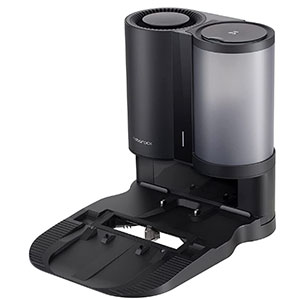
Roborock S7, on the other hand, comes with a smaller 0.47L washable onboard bin. If you have a busy household, this might be disadvantageous as you will have to be emptying the bin more often.
For the record, the Roborock S7 is not a self-emptying robot vacuum as it doesn’t come with the Roborock Auto Empty Dock. But just like the Q7, it is compatible with auto emptying technology.
If you don’t want the hassles of emptying the bin manually now and then, we suggest you go for the Roborock S7+. The emptying station does all the dirty work. The S7’s dock can hold up to one month’s dirt.


Roborock Q7 is the winner in this round as it features a larger onboard bin. What’s more? The Q7’s Auto Empty Dock can hold more dirt, meaning you can clean often and empty the bin rarely.

The Roborock Q7 packs a powerful lithium-ion battery with a 5200mAh capacity, enough to power the robot for a cool 180 minutes when in Quiet mode. Obviously, the runtime dips when in high power modes.
Regarding power management, it can recharge and resume cleaning automatically. It also boasts a cool feature dubbed Top Up Charging, a quick charge feature that recharges the robot to 80% and sends it back to finish cleaning instead of waiting for the entire 2-3 hours for the battery to hit 100%.
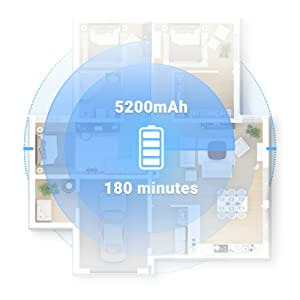
The S7 is not different from the Q7 in terms of battery and runtime. It is also powered by a 5200mAh lithium-ion battery that puts up 180 minutes runtime in Quiet mode, the robot’s low power mode. Here again, expect the runtime to drop as suction is stepped up. Regarding power management, the S7 is intelligent enough to dock and recharge automatically. It will also resume cleaning automatically, so at no time will you find your home halfway cleaned. There’s also Top Up Charging so the robot won’t have to recharge to 100% to complete the task at hand. The normal recharge time is 2-3 hours.


There is no winner in this round as both Roborocks use the same 5200mAh lithium-ion battery and will recharge and resume cleaning automatically. They also have Top Up Charging.

The Roborock Q7 is a smart robot vacuum cleaner powered by 2.4Ghz WiFi for smartphone app operation and voice assistant compatibility.
You can access all the controls via the Roborock Home app. You can start or stop a cleaning session, set cleaning schedules, adjust suction levels, view cleaning routes, set No Go Zones, Invisible Walls, etc.
Besides app operation, the Q7 is compatible with the popular voice assistants, talk of Alexa, Google Assistant, and Siri. It also comes with inbuilt voice control.

The S7 is also a smart robot vacuum compatible with 2.4GHz WiFi for app operation and syncing with voice assistants.
On the app, you can start or stop a cleaning session, set cleaning schedules based on your routine, adjust suction levels, adjust water flow, set No Go Zones and Invisible Walls, view cleaning reports, and so on.
The S7 also works with Alexa, Google Assistant, and Siri and has an inbuilt voice control.


In this round, there is no winner, as both models are well endowed when it comes to automation and smart features.
Roborock Q5 tags, along with a generous 1-year warranty, so you are eligible for repair or replacement if it develops a problem within the first year of purchase.
This is as long as you don’t void the warranty by breaking the warranty’s terms and conditions.
Regarding support, there are plenty of resources to help you get started and use the vacuum cleaner. Last on replacement parts and supplies, Roborock has availed them at affordable prices.
The S7 also comes with a 1-year warranty, so you should get a replacement or at least repairs in the event the robot fails within the first year of purchase.
There are resources in the form of video tutorials and guides to help you get started and operate the robot.
Regarding parts, the S7’s parts and supplies are readily available at affordable prices.


There is no winner here as both robot vacuums come with a 1-year warranty and replacement parts and supplies are available at affordable prices.
Roborock Q7 comes with:
- Roborock Q7 Robot Vacuum
- Dock Station
- Power Cable
- Screwdriver
- User Manual
On the other hand, the Q7+ comes with:
- Roborock Q7 Robot Vacuum
- Auto Empty Dock
- 2 Dustbags
- Power Cable
- Screwdriver
- User Manual
Roborock S7 comes with:
- Roborock S7 Robot Vacuum`
- Dock Station
- Power Cable
- Screwdriver
- User Manual
On the other hand, the S7+ comes with:
- Roborock S7 Robot Vacuum`
- Auto Empty Dock
- 2 Dustbags
- Power Cable
- Screwdriver
- User Manual
Maintenance
Regularly check the main brushroll and remove any tangles and other dirt that may impede agitation and dirt lift up. You should also inspect the side brush to ensure it is spinning freely. Replace the main brush and spinning brush after 6-8 months.
The S7’s brushes should also be inspected regularly to ensure there is no dirt or hair tangles that could jam it. The spinning brush should also be spinning freely. The main brush and side brush should be replaced after 6-8 months.
At least twice a month, pop out the Q7’s filter and tap it in the trash can to expel excess dirt. Then, rinse it using cold water, and let it dry before returning it. The filter should be replaced in 3-4 months for optimal performance.
At least twice a month, remove the S7’s filter and tap it in the trash can to get rid of excess dirt before rinsing it using cold water. Then, leave it to dry before putting it back. The filter should be replaced after 2-3 months.
The Q7 doesn’t automatically empty itself, so you will have to empty it, preferably after every cleaning session or after a few days, to prevent the buildup of odor.
If you have the Q7+, you should remove and dispose of the dustbag when it’s full. As mentioned earlier, the Q7+’s dustbag can hold up to 7 week’s dirt.
The Roborock S7 is a base model that doesn’t come with the Auto Empty Dock, so you need to empty the bin manually.
If you have the S7+, the only maintenance required will be removing the dustbag when full and replacing it with a new one. This is after a month or so, depending on how busy your home is.
The water tank should be filled when empty. You should also remove the mopping pad and wash it at least weekly so it doesn’t leave marks on your floor. Replace the mopping pad after 1-2 months, depending on its condition.
The water tank should be filled when empty. You should also wash the mopping pad regularly and replace it after 1-2 months.
Regularly, lift the robot and check whether the wheels are moving freely. Remove any tangles and dirt that could jam the wheels.
Regularly inspect the wheels and remove any tangles and dirt that could jam them.
Any dust or dirt on the sensors will trouble the robot’s navigation. If your robot is hitting obstacles, consider wiping the sensors using a damp cloth.
ROBOROCK S7 include sensors:
- LDS (Laser Distance Sensor): This sensor allows the robot to create a map of the environment and navigate around obstacles with precision.
- Gyroscope and Accelerometer: These sensors provide the robot with information about its orientation and movement, allowing it to maintain balance and stability.
- Cliff sensors: These sensors detect when the robot is about to fall down stairs or off of a high surface, preventing accidents.
- Optical Sensors: These sensors detect objects in front of the robot, allowing it to avoid collisions.
- Bumper Sensors: These sensors detect when the robot makes contact with an object, allowing it to adjust its path and continue cleaning.
- Mopping sensors: These sensors detect the amount of water in the mop tray and automatically adjust the water flow to ensure consistent and thorough mopping.
All of these sensors work together to ensure that the ROBOROCK S7 is able to clean effectively and efficiently, without getting stuck or causing damage to your home. The robot’s advanced sensors allow it to navigate around obstacles, avoid collisions, and clean thoroughly, providing you with a hassle-free cleaning experience.
Cleaning Test Results
Vacuuming Performance (Bare Floor)
To give our readers a glimpse of how the robot vacuums we review perform, we test them in real household settings, using the common household dirt and messes.
For the Q7 and S7, we tested them on bare floors and carpets to ascertain their vacuuming performance. The dirt we used included flour, sugar, rice, kitty litter, coffee, cereals, sand pebbles, pet hair, and sand pebbles. Below is an illustration of the results on both bare floors and carpets.
Vacuuming Performance (Bare Floor)
- Sugar
- 98%
- 97%
- Flour
- 97%
- 96%
- Rice
- 98%
- 97%
- Cheerios
- 99%
- 98%
- Raw popcorns
- 98%
- 97%
- Kitty litter
- 97%
- 96%
- Pet hair
- 98%
- 97%
- Sand pebbles
- 97%
- 96%
Vacuuming Performance (Carpet)
Vacuuming Performance (Carpet)
- Sugar
- 95%
- 94%
- Flour
- 94%
- 93%
- Rice
- 96%
- 95%
- Cheerios
- 98%
- 97%
- Raw popcorns
- 95%
- 94%
- Kitty litter
- 94%
- 93%
- Pet hair
- 94%
- 94%
- Sand pebbles
- 94%
- 93%
Mopping Performance (Hardwood)
Considering the two have mopping functions, we also tested the mopping performance on hardwood floors. We created messes using soda, urine stains, paw marks, margarine stains, cooking oil, porridge stains, and honey. Below are the results.
Mopping Performance (Hardwood)
- Vinegar
- 98%
- 99%
- Water
- 99%
- 99%
- Soda
- 99%
- 99%
- Porridge Stains
- 97%
- 98%
- Margarine Smears
- 95%
- 97%
- Cooking Oil
- 96%
- 98%
- Urine Stains
- 94%
- 98%
- Paw Marks
- 98%
- 99%
- Honey Smears
- 97%
- 98%
Frequently Asked Questions
1. Is Roborock S7 Xiaomi?
2. Does the Roborock S7 have a camera?
3. Is Roborock better than ECOVACS?
4. What is the Roborock Q7?
5. Will the Roborock Q7 avoid wetting carpets?
Wrapping Up
That’s the end of this Roborock Q7 vs. S7 comparison review. As you have seen, the two models are pretty similar, but of course, there are a few differences that should inform your purchase decision. The differences are in the mopping performance and mapping.
So, what’s the best choice?
Well, the Q7 is a worthy option as it comes with 3D Mapping that gives the robot a better understanding of your home’s floor plan. However, the S7 is the ultimate winner as it takes mopping to the next level courtesy of Sonic Mopping Technology. It scrubs dirt, stains, and grime more effectively than the Q7. It also comes with extras such as UltraSonic Mopping Technology and VibraRise Automatic Mop Lifting. If you want effective mopping, the S7 should be on top of your wishlist.
But if you don’t care so much about mopping, the Q7 can be a better option as you could save a few hundred bucks for something else.



